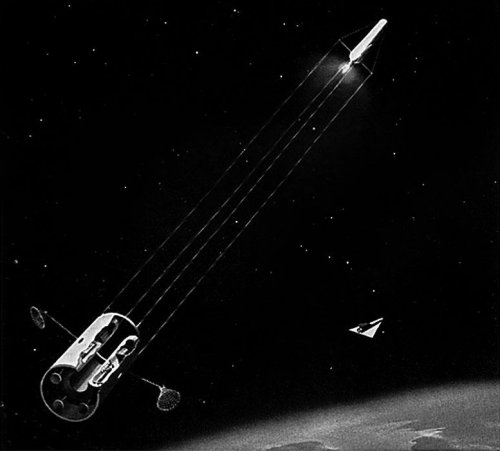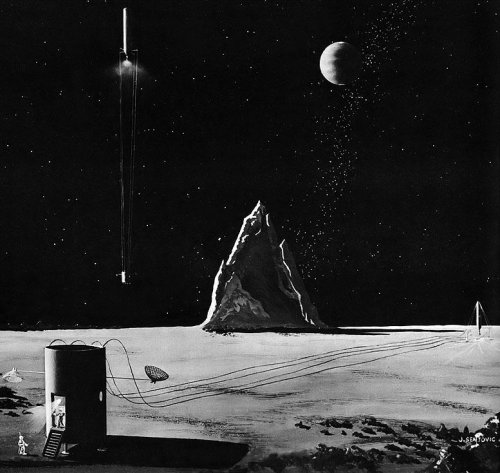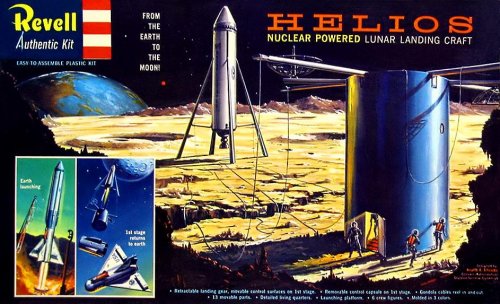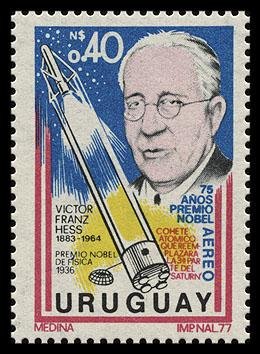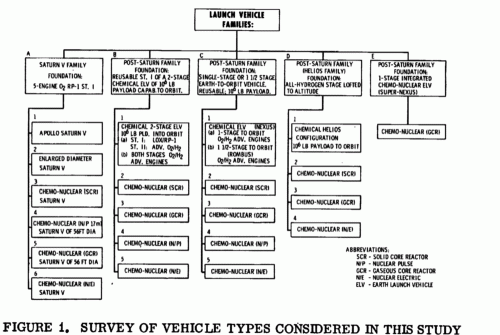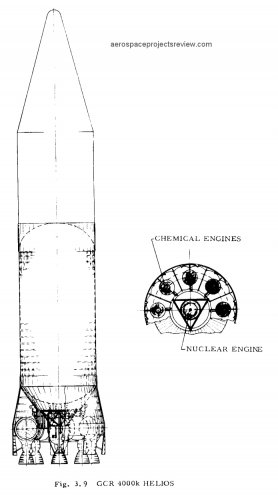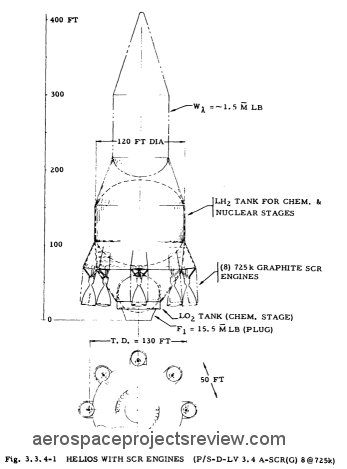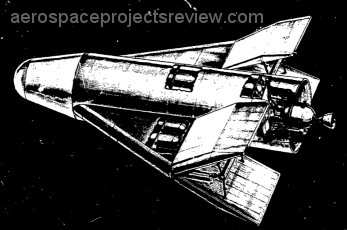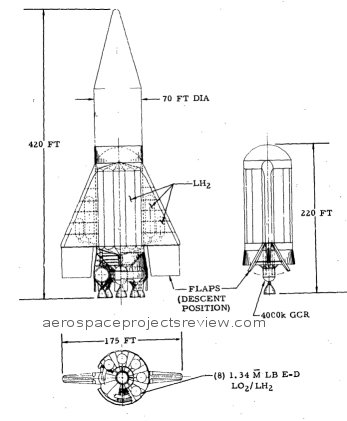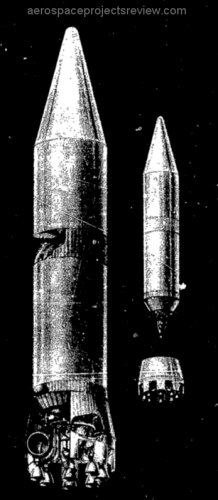RanulfC said:
"The Nuclear Rocket" by James Dewar mentions another "HELIOS" by Ehricke that used a chemical booster first stage and a massive 15,000MW NTR using Ammonia for a serious heavy lifter vehicle and a smaller single/two-barrel model for lighter payloads.
"Helios" was sort of a catch-all name for a subset of the Post-Saturn studies from ca. 1963, with at least General Dynamics and Douglas proposing several designs. The basic point of it was that the booster would have a combo of both chemical and nuclear engines. A common idea was something like a giant-sized Atlas, with the central sustainer (or several sustainers) being nuclear, while the droppable outer booster engines were chemical. Others with single stage with a mix of chemical and nukes staying together. This "Helios" had nothing to do with the Helios the topic is aimed at, yet Ehricke worked on both.
It also mentions the Douglas RITA (Reusable Interplanetary Transport Atomic) do we have any information on that?
Yup. A conical vehicle with a single large nuclear engine.


![1966LetsFindoutaboutMars07[1].jpg](/data/attachments/86/86681-01c22928a22e196c529f90acaca3414d.jpg)
